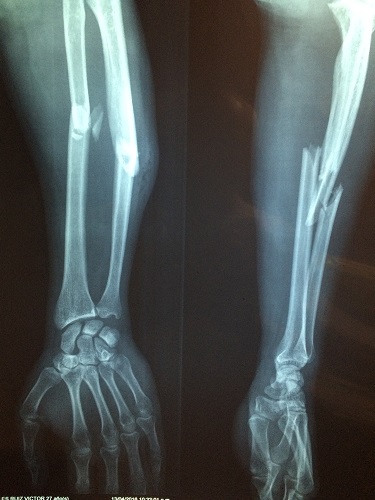For most types of doctors, direct patient care activities, from clinical consultation to performing extensive surgeries, comprise a significant part of the workday. That’s not necessarily true for a radiologist, an expert in the interpretation of diagnostic imaging scans. A typical day spent practicing radiology, one of the highest-paying medical specialties, can look very different depending on whether you pursue a career in diagnostic or interventional radiology.
Looking at Diagnostic Images
IMAGE SOURCE: Pixabay, public domain
One of the most crucial core tasks of a diagnostic radiologist is meticulously reviewing the images created by tests such as X-rays, MRI scans, CT scans and PET scans, O*NET reported. A radiologist is the expert on using these images to reach or rule out a diagnosis. Other core job duties revolve around this responsibility, such as reviewing patients’ medical histories and records and instructing technologists on the position, angle and technique they should use to capture the image needed for diagnosis. A diagnostic radiologist may spend most of their working hours going over images with their carefully trained eyes to find and identify abnormalities.
What are you looking for? That depends on the case. Some patients come in for an X-ray of an injury and need a radiologist to determine whether, where and how severely a bone is broken. Others are sent for regular screenings, like a mammogram, which checks to see if there are any suspicious growths.
Whether radiologists are looking to see if something is there or trying to determine what specifically is the cause of a problem – from a noticeable lump to a lingering cough – it is important to be thorough in your review of the patient’s films. Some radiographers even save patients’ lives when their attention to detail allows them to find an unexpected problem, like a small, early-stage tumor that appears on the X-ray scan of a patient undergoing the test for an unrelated reason.
For each set of images they review, the radiologist must report their findings. This is often accomplished by preparing a comprehensive written interpretive report that can be shared with the patient and, more crucially, with the referring doctor. In a role as a strictly diagnostic radiographer may never even meet a patient face-to-face, according to the University of Virginia Health System. However, the physician will communicate their findings in writing, and it’s not unusual for a diagnostic radiologist to talk to the patient by phone.
The work of a radiologist differs from that of a radiographer or radiologic technologist. The main responsibility of a radiographer is to take, rather than interpret, scans using medical imaging technology, the United States Bureau of Labor Statistics reported.
Performing Interventional Procedures and Radiation Therapy
If you choose to focus on interventional radiology or radiation therapy, your day may look more like that of physicians in other specialties. You’ll have a caseload of patients each day, each coming in for a procedure or therapy.
An interventional radiologist may perform many different types of procedures, according to the American Medical Association. Image-guided biopsies are used to secure a sample of a specimen of tissue for pathology testing. Some procedures in interventional radiology insert tubes, such as gastronomy tubes (feeding tubes) or nephrostomy tubes that drain the urine from the kidney when the patient’s normal flow of urine is blocked. Other procedures are performed to drain collections of fluids, freeze or burn cancerous tumors within the body, stop uncontrolled bleeding through embolization or inject steroids or anesthetics into the joints of patients who suffer from joint pain.
Beyond the scope of typical interventional radiology is another form of medical intervention: radiation therapy. Radiation therapy is most typically used in the treatment of cancer but may also be a treatment option for some noncancerous medical conditions, the American Board of Radiology reported. Many different types of cancer can be treated with radiation.
Radiation therapy is used to treat cancer in different ways, according to the National Cancer Institute. The goal of radiation oncology may be to shrink a cancerous tumor to make it small enough to remove surgically, to cure the cancer completely by destroying cancerous cells or to reduce the symptoms of cancer. Generally, radiation therapy is the use of energy to attack and eliminate cancerous cells in the body, the Mayo Clinic reported.
A common form of radiation therapy is external beam radiation therapy, or teletherapy. External beam radiation therapy most commonly uses a linear accelerator, a machine outside the body, to deliver a beam of radiation energy to a localized region of the body to destroy cancer cells. In a separate form of radiation therapy, called internal radiation therapy or brachytherapy, the radioactive substance is inserted into the patient’s body.
Historically, around 50 percent of cancer patients have undergone radiation at some point during their cancer battle, according to the International Journal of Medical Sciences.
Additional Resources
Is Being a Radiologist More Than Just Looking at Some Black and White Pictures?
What Are Some Courses I Would Study in Medical School If I Planned to Be a Radiologist?

